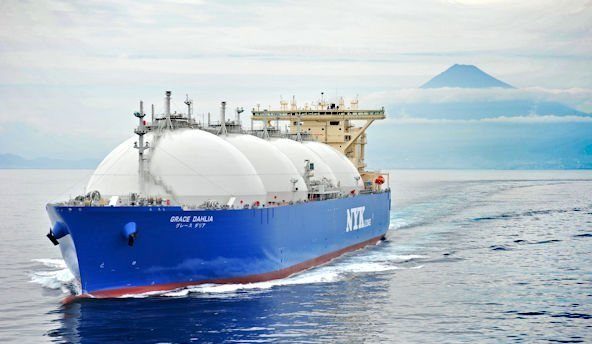Mixed outlook for LNG

Not every analyst is as convinced as our readers on prospects for the liquefied natural gas trades, writes Jason Jiang.
Splash readers have chosen LNG as the best shipping segment in 2017 in an ongoing online poll.
However, research institutes and shipowners remain cautious about the outlook.
“We are quite bearish on the LNG shipping for this year, in contrary to many. The fleet growth will stay strong at the rate of 13% this year, which will keep rates under pressure. So the seasonal uptick in rates that we have seen recently will come under pressure as heating demand wanes and fleet growth picks up,” says Shresth Sharma, Drewry’s lead LNG shipping analyst.
“However we are bullish on the medium and long-term outlook of LNG shipping, expect rates to improve from next year (2018) onwards,” Sharma adds.
Sharma explains one of the major reasons for this outlook is the expansion in US LNG supply.
Since most new LNG export capacity in the US will start to come online from 2018 onwards and almost 85-90% of this supply has been tied to contracts, the trade will create demand for a large number of vessels. However, the LNG market has changed considerably from the time when these contracts were signed and so Asian buyers are looking to offload their contractual supply.
“If we continue to see more Asian LNG buyers looking to divert their US cargoes either to Europe or Latin America, this could substantially reduce the demand for LNG ships, taking into account the shorter hauls from the US to Europe or to Latin America,” Sharma says.
“Although the capacity diverted so far by Asian buyers is not significant enough to negatively impact LNG shipping, if this trend continues and more Asian buyers follow suit, it will reduce demand for LNG vessels,” Sharma adds.
Noah Parquette, senior analyst at JP Morgan, believes the LNG shipping market will see a gradually recovering over the course of 2017, however, the recovery will lag market expectations. “Low oil prices will continue to keep east-west arbitrage low and voyages localized,” Parquette maintains.
Nicholas Schneider, research projects manager of Teekay Corporation, reckons the LNG fleet is growing faster than the demand for vessels while the LNG trade is now increasing faster than fleet supply.
“By the end of 2017, between 10 and 12 new LNG exports trains are scheduled to come online in Australia, the USA, Russia, Malaysia and West Africa. In total, LNG trade should increase by approximately 30m tonnes in 2017, or close to 11%. In contrast, the LNG fleet should increase by roughly 8% next year, leading to an increase in fleet utilization over the course of 2017,” Schneider says.
Schneider believes this trend will continue through the end of the decade and the current orderbook for LNG vessels is equivalent to approximately 31% of the fleet, whereas the LNG trade is expected to grow by more than 40%.
According to Golar LNG, a combination of falling energy prices, increasing gas availability and severe power shortages in many regions is prompting increased interest in FSRUs in the year ahead. The firm said they are receiving increasing inquiries for FSRU newbuildings and smaller conversion units.
A Wood Mackenzie report showed that FSRU imports have more than doubled in the past two years and now account for about 15% of the LNG supply annually, and the number is set to rise.
LNG carrier operator GasLog is also positive about the LNG shipping demand in the coming years.
“We continue to see a number of tenders for multi-year charters for vessels, which we expect will be used to transport volumes from new liquefaction facilities due to commence production over the coming years. We believe that these new LNG volumes will create demand for additional ships over and above those available in the market today, and fundamentals continue to point to a recovery in 2017 and beyond,” the company said in a statement.
Concluding, Stuart Nicoll from analyst Maritime Strategies International (MSI), tells Splash: “On LNG, the MSI view is that prospects for trade are good but the orderbook will weigh down on any significant recovery in the near term. The year ahead will see an improvement in fortunes for LNG carrier owners, with rising trade and improved rates, according to our latest research. In 2017 MSI forecasts that rates will fluctuate around current levels with a 7% improvement over the 2016 average, despite no improvement in the sector utilisation rate.”
You can still have your say on what’s going to happen with the LNG trades, plus most other shipping sectors, by taking part in our online survey here.
